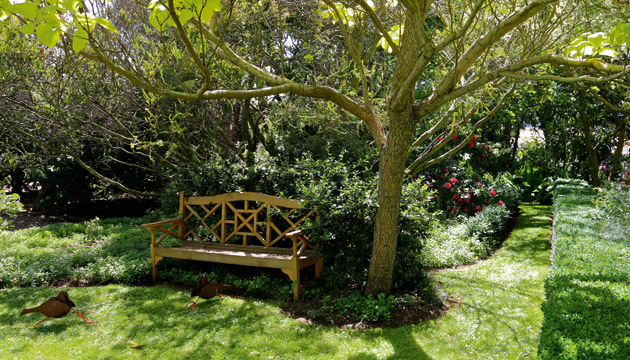A 200-year-old farm in Tasmania features stunning floral gardens, thanks to one woman’s dedication over 37 years.
Story by Kim Woods Rabbidge
Just out of Campbell Town, in Tasmania’s Northern Midlands, the road heads past paddocks with centre-pivot irrigation. Turning into Riccarton, the Lyne family’s wool, prime lamb and cropping property first settled by Europeans nearly 200 years ago, a coppice of trees in the distance is a sure sign of a sheltered garden. “We suffer from very nasty north-west winds,” says Poppy Lyne, who’s been living here since 1979, when she and husband Crosby took over the property. “I was mindful of those who’d gardened before me, including my mother-in-law, who was a great gardener,” Poppy says.
For 20 years a manager looked after the property, until Poppy emerged from the haze of babies and toddlers. The garden had 150-year old hawthorn hedges, elm trees, connifers and drought-tolerant acacias (once used for stock feed) but Poppy relished the opportunity to introduce her own ideas. Thirty-seven years later it has become a beautiful oasis amid farming and grazing land, where each spring and summer peonies star and masses of roses fill the air with heady fragrance.
This is one of the drier parts of Tasmania, where the average annual rainfall is just 525 millimetres, so the property’s location by the Elizabeth River is perfect for irrigating some of the barley, wheat, canola, peas and poppy crops. Riccarton also produces prime lambs and wool. During the prolonged drought (which recently broke after good winter rains) Poppy kept the lawns a soothing green for as long as possible. “We don’t have a watering system – it’s just me – but it gives me a chance to see how everything is growing and what needs attention,” Poppy says.
This story excerpt is from Issue #109
Outback Magazine: Oct/Nov 2016









